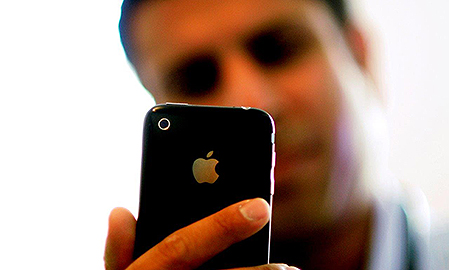New research suggests the waiting room isn’t just for magazines anymore.
In a CDMiConnect report on emerging digital trends, dubbed “The Patients First Reports: In-Office Mobile Device Use,” the Omnicom agency surveyed over 3,000 patients aged 18 and over with more than 200 health conditions, to “understand the impact of healthcare at our fingertips and uncover how it has influenced the roles we play in each other’s lives,” stated Deb Deaver, agency president.
Managing partner Dina Peck told MM&M that “some of the content we uncovered was so surprising that we decided to go ahead and publish our findings.”
The waiting room, and to a lesser extent the exam room—according to the results—offers a significant mobile-friendly touch point, which healthcare marketers can leverage to help foster a productive dialogue between patients and their GP or specialist, the agency says. And the way to capitalize on this screen time is to provide these patients with relevant and accessible content which caters to their needs.
According to the findings, patients spend an average of 20 minutes in the waiting room, and one in five Americans turns those “20 minutes of tedium into a productive prelude to an active doctor discussion,” researchers wrote.
“The majority [of patients] were looking for information specifically around their appointment,” Eliot Tyler, managing partner of CDMiConnect told MM&M. “They want to know ‘what do these symptoms mean’ and are searching for that confidence so they can engage their doctor about it.”
That search for confidence is at the center of not only healthcare marketing, but nearly all advertising—it’s the question “is what I’m experiencing normal?” That search for supportive context is motivated by a desire to not only help patients feel reassured in who they are, as well as in what they’re doing, so they can then carry that confidence into their appointment.
“The common theme was patients feeling prepared and confident to have that discussion with their doctor,” Tyler affirmed.
To capitalize on the prelude to the visit, Tyler said agencies need to “focus on the content strategy and think about information that patients specifically need,” and whether or not that information is accessible.
“One example is someone using their phone in an exam room, and during their previous appointment, the doctor said he wanted to put them on product X,” Tyler recalled. “And so the patient takes out her phone and looks up the side effects, which sound awful to her, and then during the appointment asks what else she could try.
“Five years ago, you could have made the argument that side effects should be less visible than some of the long-form disease-education material—this information is really changing content strategy and information hierarchy.”
Another significant finding was the prevalence of “power users,” whom researchers defined as “a subset of waiting room mobile users who leave no corner of the digital universe unexplored when it comes to learning about their health.”
“These are the people who are doing their digital homework,” Peck said. “They’re going to be spending a lot more time trying to find the product that is right for them.”







